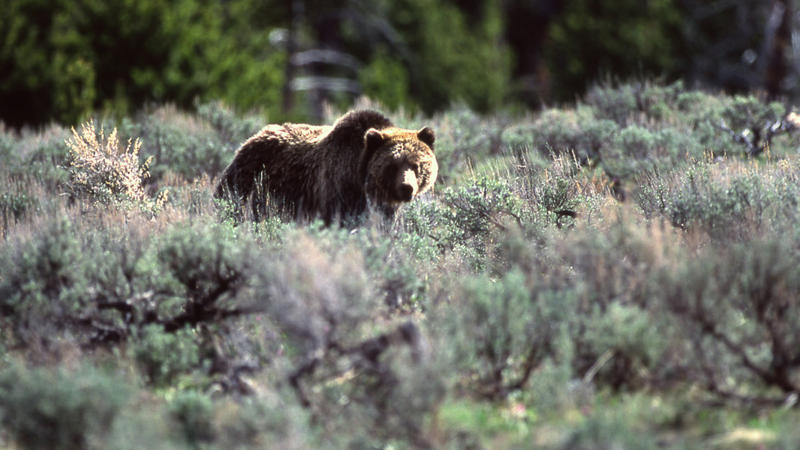
Have thoughts on potentially bringing grizzly bears to the North Cascades? Speak your mind at public meetings
Listen
Do you think grizzly bears should be brought into Washington’s North Cascades? Yes or no, the feds want to hear from you. Several public meetings are planned to share your thoughts. Correspondent Courtney Flatt has more.
(Runtime 0:41)
Read
If you have thoughts on whether grizzly bears should be brought into Washington’s North Cascades, the federal government would like to hear them. There are several public meetings planned for people to give their opinions on a range of ideas from the U.S. Fish and Wildlife Service and the National Parks Service.
An online informational meeting will be held from:
- 7-8:30 p.m. Oct. 17 over Microsoft Teams Live.
The virtual public meeting will have a Q&A, but people will not be able to provide official comments.
Federal officials recently added two more public meetings in Darrington and Winthrop, Wash. In-person meetings across the state will be held from:
- 5:30-8:30 p.m., Oct. 30 in Omak, Wash., at the Okanogan County Fairgrounds (Agriplex and Annex);
- 5:30-8:30 p.m., Nov. 1 in Newhalem, Wash., at Currier Hall;
- 5:30-8:30 p.m., Nov. 2 in Darrington, Wash., at the Darrington High School Auditorium;
- 5:30-8:30 p.m., Nov. 3 in Winthrop, Wash., at the Winthrop Barn Auditorium.
Written public comments will be accepted through Nov. 13.
There are only a handful of grizzly bears in the North Cascades Ecosystem – so few, that biologists say the bears will die off if people don’t step in to help. There are several potential plans in a draft environmental impact statement that could bring grizzlies to the North Cascades.
Those range from doing nothing to the federal government’s preferred option to designate the bears as an experimental population, known as a 10(j) rule. That would give local authorities more control over bears that cause problems.
If officials decide to move grizzlies to the region, they would initially bring in three to seven bears a year for five to 10 years. The goal, 60 to 100 years in the future, would be to have up to 200 grizzlies in the North Cascades. Bears could come from Montana, Wyoming or interior British Columbia to be relocated to the North Cascades.
According to the plan, the agencies would aim to bring in mostly 2 to 5-year-old female bears with no history of conflict.
The North Cascades Ecosystem is cut off from other grizzly bear habitats. It spans the U.S.-Canadian border. The last time a grizzly bear was confirmed on the U.S. side of the border was in 1996.
Efforts to bring grizzlies back to the region have spanned decades. Most recently, the federal government had been fairly far along in a yearslong process when, in 2020, the Department of Interior abruptly stopped everything.















